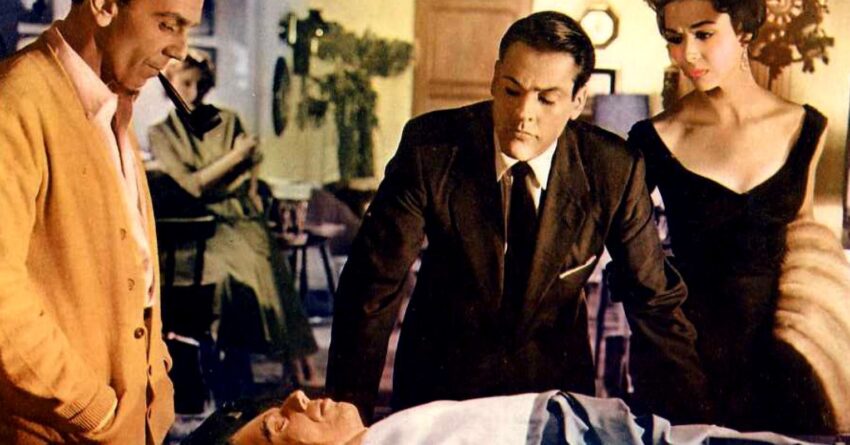Science fiction films often anticipate the future. Invasion movies, a popular niche, might give us a clue about our own. What do I mean by invasion? Aliens and microbes from outer space, earthly viruses, invasions of nations, schools, and homes, and thought invasions—things and thoughts that leave their boundaries and enter ours, like propaganda and gaslighting.
Invasion of the Body Snatchers has engaged readers and moviegoers for a long time, ever since Jack Finney’s best-selling book, published in 1955, became a classic science fiction horror and famous film noir starring Kevin McCarthy in 1956. An aggregate of reviews in Rotten Tomatoes called it “one of the best political allegories of the 1950s.” Three other movies are in direct lineage from the 1956 film, which begins with a patient saying that her husband is not her husband, even though they look identical. A paranoid delusion? Capgras syndrome?
The 1956 invasion occurred in Santa Mira, a small town in suburban California. Family values, the baby boom, baseball, and television were welcome changes from the decade before that brought them World War 2, Hiroshima, the Korean War, and Joseph McCarthy’s Red Scare, straddling both decades. Some interpreted Invasion of the Body Snatchers (1956) as a warning that society should not be complacent: “Dehumanization and loss of identity are themes in science fiction.”
Twelve years later, Donald Sutherland starred in the remake. An aggregate Rotten Tomatoes review of the 1978 film says, “Employing gritty camerawork and evocative sound effects, Invasion of the Body Snatchers is a powerful remake that expands upon themes and ideas only lightly explored in the original.” What does “expand upon the themes” mean?
In both films, aliens come from outer space in microscopic droplets, forming pods to grow aliens with duplicate humanoid features stripped of emotions. The human detritus is shoved into garbage trucks that take over the streets of San Francisco. The dehumanization of man accelerates.
The 1978 film, set in San Francisco, a large, heterogeneous urban city, follows the assassinations of the 1960s, the Vietnam War, Woodstock’s free love, drugs, the women’s movement, and the Manson family. Men’s groups and women’s groups abound. Ironically, 1978 was the year of the Jonestown cult’s mass suicide and other cults. One such was the Sullivanian group of therapists in New York City that had already been operative for two decades. Families threatened to collapse.
Unlike a psychiatrist in the 1956 movie, in 1978, Leonard Nimoy plays a charismatic psychiatrist who turns into an alien early on to facilitate the transformation of others. Nimoy, now a cult leader, powerfully asserts that non-believers would realize the benefit of a lack of human qualities, such as being “free of anxiety, finally.”
This persuasively stated encouragement invades the minds of the terror-filled San Franciscans to make them join willingly rather than being alone and subject to paranoia. Some make heroic efforts to escape, but the newly minted aliens viciously hunt down those remaining humans, reminding me of scenes from the Fritz Lang movie M and the grotesque hunts of Jews during the war—no wonder the 1978 film ends with Donald Sutherland’s scream. His face resembles Norwegian Edvard Munch’s The Scream, a painting filled with despair and hopelessness. The sounds he emits recall the manic violence of the hunter finding a new victim.
Fifteen years later, Body Snatchers, which received a four-star review from Roger Ebert, takes place on a remote army base in Alabama. An EPA investigator arrives with his family on assignment to investigate possible toxins on the base. The teenage daughter, Marti, played by Gabrielle Anwar, is accosted by a soldier who shouts, “They are already out there… They get you when you are sleeping.”
Being asleep is a prerequisite for the change in all four films. Marti notices that some of the soldiers’ behavior becomes emotionally distant. The story is dark and quite scary. Lines spoken by one of the aliens originally from the deserted planet: “Only the race counts, not the individual.” Genocide on speed?
Her father visits this remote army base with his family to investigate concerns about large barrels possibly containing toxic materials. The 1980s saw an increase in natural disasters, such as hurricanes and volcanoes, as well as human-caused disasters, like Three Mile Island, Chernobyl, and the Bhopal Gas tragedy.
Similar to the two previous movies, alien clones replace human beings more gruesomely than in the earlier films, as we witness their tentacles entering their human victims’ orifices. The human takeover speeds up.
Roger Ebert called the 2007 movie the fourth and the least favorite of the Invasion films. It starred Nicole Kidman as the psychiatrist in Washington, D.C. The film follows 9/11, the Middle East Wars, the AIDS epidemic, and the Decade of the Brain. Unlike Nimoy, the Kidman psychiatrist is empathetic and uses medical science to defeat the virus causing the death of humans.
A Space Shuttle crashes to Earth, dispersing a fungus-like form across the United States. Her ex-husband, who is a CDC director, is already infected and wants to distribute the virus as it will reduce crime and violence by changing people’s brains. Except for those with previous brain injuries, the virus changes DNA. Using gene splicing methodology, an antidote is formed; the country recovers but has no memory of the invasion.
Yes, the psychiatrist is empathetic, and an antidote to the virus is formed. What’s missing? Memory is wiped out. Don’t we learn by experience?
